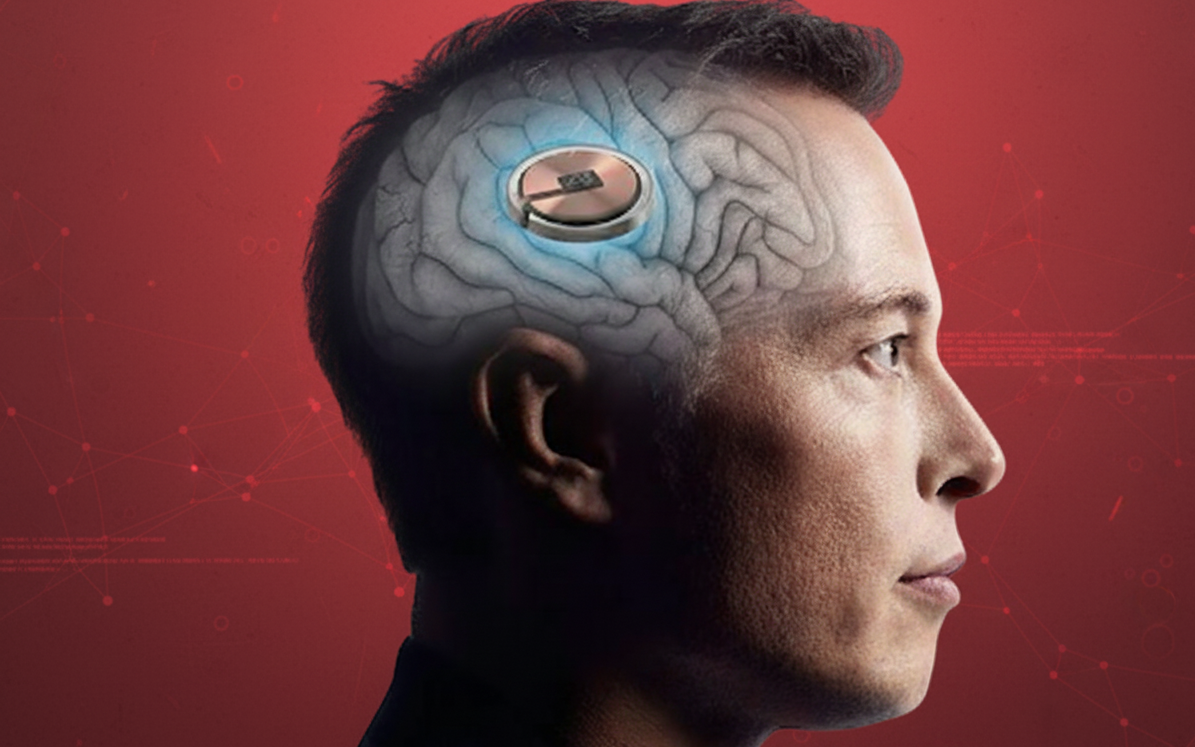They say the human brain is the most powerful computer, but what if we could unlock possibilities never considered before? What if the future of human evolution isn't just biological but digital? As technology advances, this reality may be closer than we think.
In 2016, Elon Musk funded the discovery of Neuralink, a brain implant to “achieve symbiosis with artificial intelligence.”¹ The goal was to allow paralyzed patients to control synthetic body parts and computers with their minds.1 The first patient who underwent this procedure, Noland Arbaugh, stated that his quality of life significantly improved after installing his Neuralink.2 He even gained the ability to play a game of chess by being able to “move the mouse around a screen just by thinking.”²,³ He hopes that, in the future, Neuralink will go so far as to enhance cognitive abilities.3 As of January 2025, three people have received Neuralink brain implants, and Musk aims to plant the device in 20-30 more people by the end of the year.⁴
Unlike many other common forms of technological development, Neuralink directly integrates into human physiology.4 However, with higher stakes comes more controversy. A study published in Nature Biotechnology discusses how brain-computer interfaces (BCIs) advance rapidly, enhancing cognitive function and restoring lost abilities.⁵ However, these possibilities also come with potentially destructive consequences. For example, the study also noted that the FBI’s 2023 cyber-threat bulletin warned that as BCIs become more widespread, the risk of ‘neurohacking’—where hackers manipulate brain signals—will increase.⁵ Neurohackers may be able to hack into someone’s body, causing them to perform tasks they wouldn’t usually do. This way, neurohacking could be a replacement way to facilitate serious crimes like murder. The possibility of the human mind being attacked could pose a serious issue with expansions in Neuralink and Musk’s ultimate goal.
Several sources go so far as to call Noland Arbaugh a “cyborg.” In 1960, Manfred Clynes and Nathan Kline coined the term “cyborg” as “a portmanteau of cybernetics and organism.”⁶(p139) But why should cyborgs be a concern in the first place?5 Science fiction movies have provided a few answers to this question. For example, numerous privacy concerns are raised, such as unauthorized tracking, data breaches, and the potential for governments or corporations to monitor and control individuals without their consent.6
This isn’t to say that the rise of cyborgs will lead to the dystopia commonly portrayed in Hollywood. Cyborgs are the inevitable future of society—some argue they already exist, and with the recent focus on the intersection between medicine and technology, the line between human and machine will only become less clear. Although many people have different views on cyborgs, the goal of each generation is not to escape technological innovation but to harness the potential of advancements to create a more advanced society.
As we are on the verge of a new era, the challenge lies in embracing progress rather than resisting it. As long as advancements such as Neuralink are guided by both advancement and ethics, they will enhance rather than diminish humanity. In the race toward brain-machine symbiosis, we must ask: will we control the technology, or will the technology control us?
References
Kulshreshth A, Singh V, Sharma YK, Sharma K. Neuralink- an Elon Musk start-up achieve symbiosis with artificial intelligence. Presented at: 2019 International Conference on Computing, Communication, and Intelligent Systems (ICCCIS); October 2019. doi:10.1109/icccis48478.2019.8974470
Hart R. Elon Musk says Neuralink’s first brain chip patient can control computer mouse by thought.7 Forbes. Published February 20, 2024. Accessed September 27, 2025. https://www.forbes.com/sites/roberthart/2024/02/20/elon-musk-says-neuralinks-first-brain-chip-patient-can-control-computer-mouse-by-thought/
Brain chip patient plays online chess with his thoughts. Reuters. Published March 21, 2024. Accessed September 27, 2025. https://www.reuters.com/business/healthcare-pharmaceuticals/neuralink-shows-first-brain-chip-patient-playing-online-chess-2024-mar-21/
Neuralink aims to implant up to 30 brain chips in 2025.8 Observer. Published January 13, 2025. Accessed September 27, 2025. https://www.observer.com/2025/01/elon-musk-neuralink-30-brain-implants-2025/
Stavisky SD, Kao JC, Nuyujukian P, Ryu SI, Shenoy KV. Plug-and-play control of a brain–computer interface through neural manifold discovery. Nat Biotechnol. 2020;38(5):544-551. doi:10.1038/s41587-020-0434-0
Sayem ASM. Digital fashion innovations for the real world and metaverse. Int J Fash Des Technol Educ. 2022;15(2):139-141. doi:10.1080/17543266.2022.2071139



